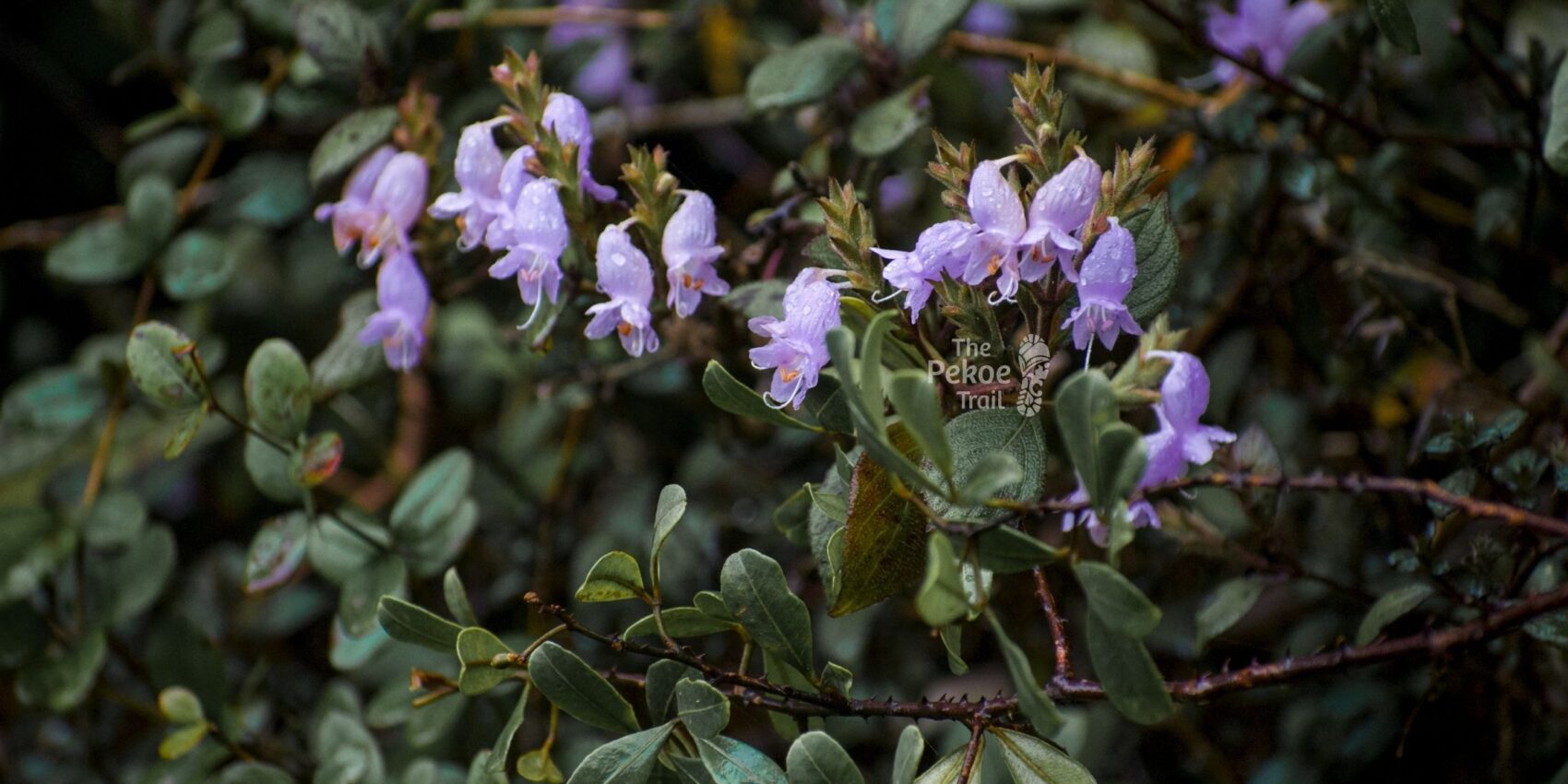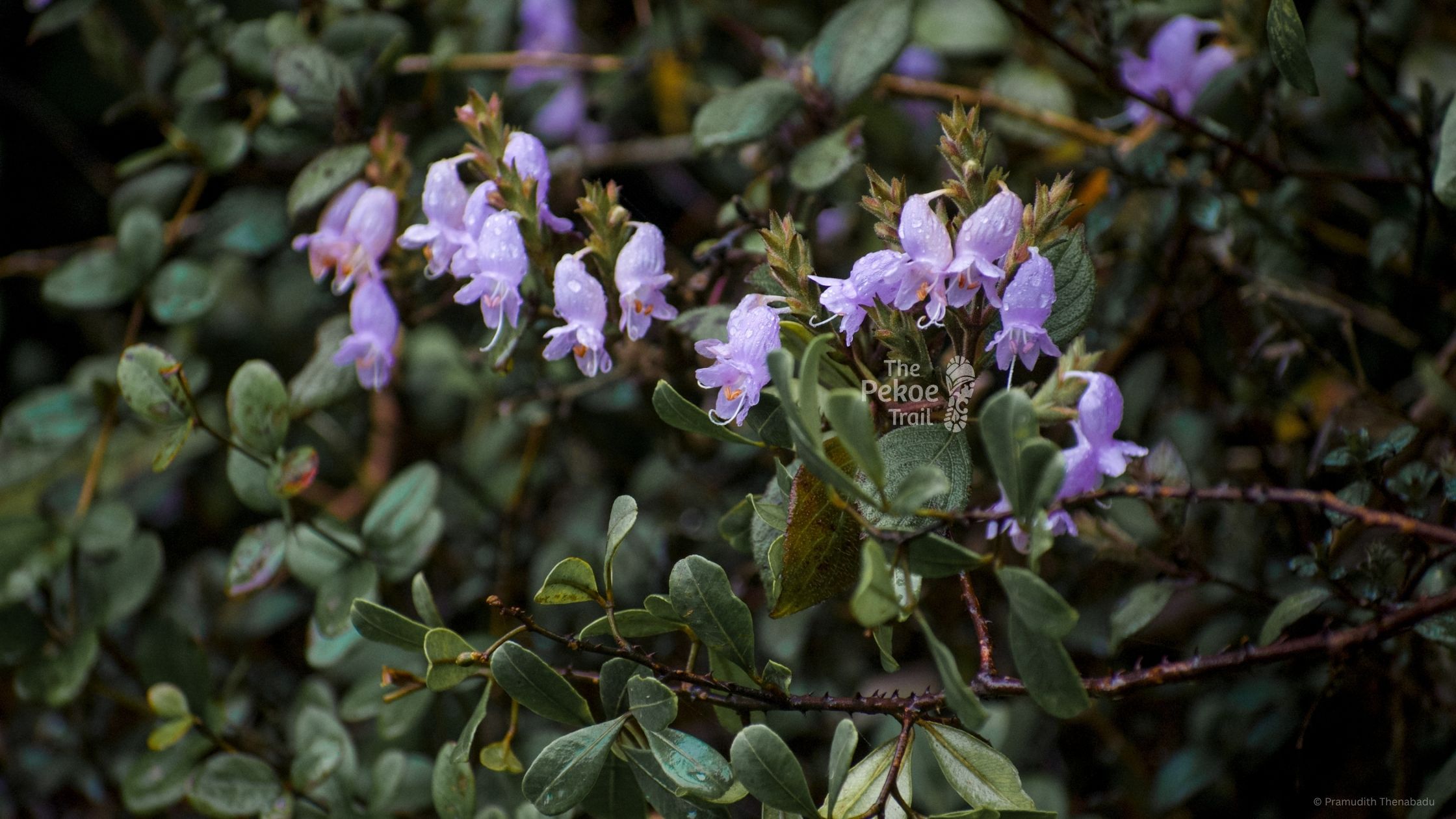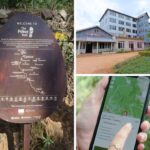From Mist to Violet: The Magic of the Nelu Bloom
The Nelu Flower: a princess born from the death of her mother.. Monocarpism
Nelu plants, found across Sri Lanka’s Wet Zone, have one of the most dramatic life cycles in the plant world. Right now, inside Horton Plains National Park and sections of the Pekoe Trail are alive with carpets of violet, blue, pink and white as part of the Great Nelu Mass Flowering Event.
What exactly is Nelu?
Nelu belongs to the Strobilanthes genus, part of the Acanthaceae family. Around the world, there are over 450 species of Strobilanthes, spread across tropical Asia and the Pacific. Sri Lanka has about 33 species, nearly 30 of them endemic; meaning found nowhere else. Sadly, many are already threatened, and one species (Strobilanthes caudata) is thought to be extinct.
Most Nelu plants are small shrubs growing beneath the forest canopy and amongst grasslands, though some form dense thickets. In Sri Lanka you see them mostly in the Wet Zone (especially in the Central Highlands of Sri Lanka, with a few species present in the Dry Zone.
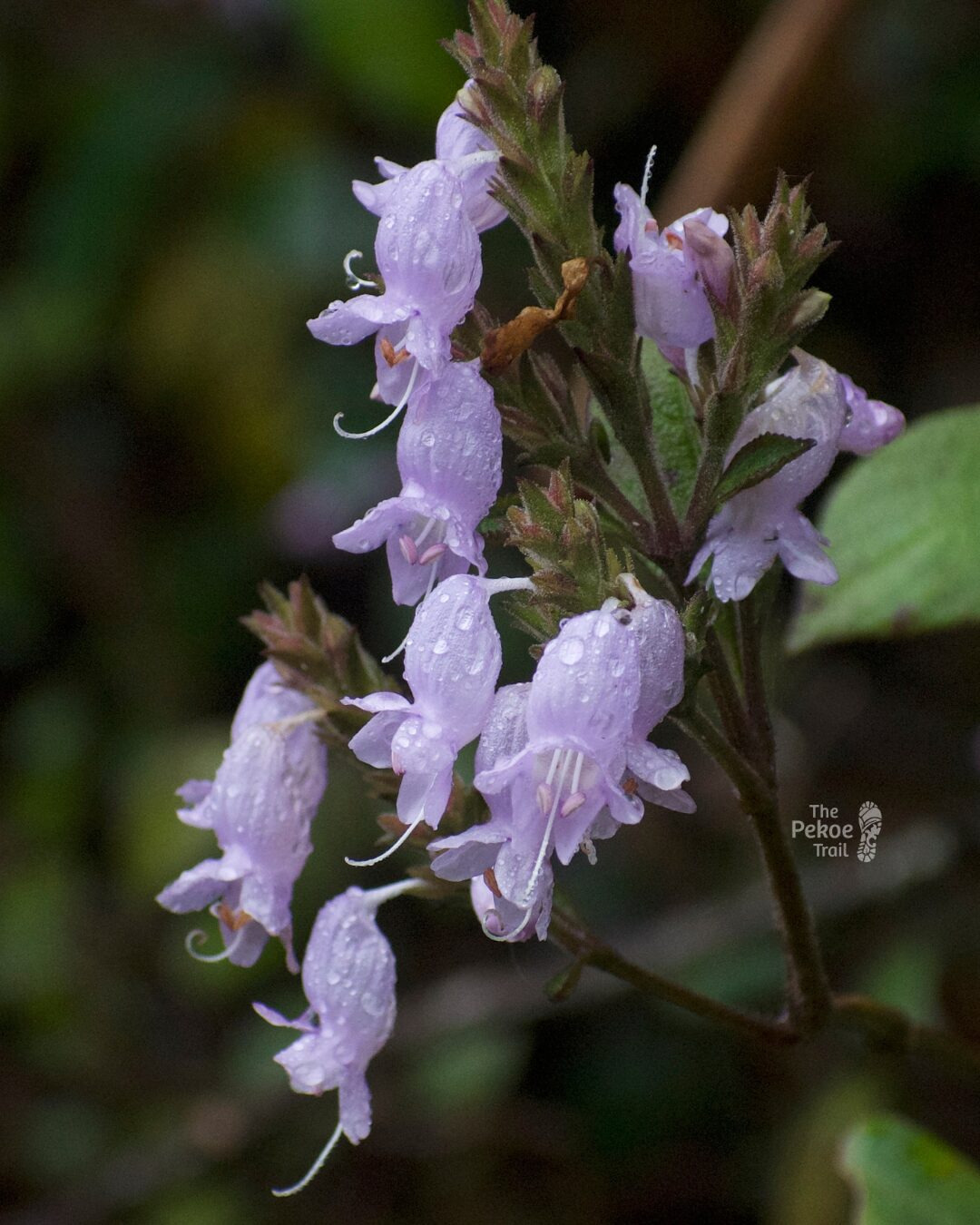
Why do they bloom once every 12 years?
This is where the story of the Nelu Flower becomes extraordinary. Most plants bloom once a year or so. But for small shrubs like Nelu, producing flowers and seeds that often is simply too exhausting. Instead, they gather energy for years, then explode in a single spectacular florescence event.
Once the flowers appear and the seeds form, the plant dies. This one-time florescence is called being monocarpic. You see the same survival trick in certain species of bamboo. Mass flowering has two advantages: predators cannot eat all the seeds and pollinators like bees and butterflies arrive in huge numbers, giving the plants a much better chance of survival.
After the plants die, the seeds remain dormant in the soil until the time is right. But a sudden climatic shock can wipe out entire colonies. That is why the florescence event feels so fragile and so precious.
Horton Plains National Park and the Bloom Cycle
At Horton Plains National Park and in adjacent Protected Areas (PAs) such as Hakgala, Pattipola – Ambewela and Ohiya, Nelu is one of the main understory plants. Some species of flower roughly every 12 years. Many bloomed in 2013 and again in 2018. Presently in 2025 we are lucky to witness another mass bloom.
Not every Nelu follows a strict cycle. Some bloom every few years. Floral genetics, climate and overall environmental factors all play a part.
Colours, species, and beauty
When Nelu blooms, the aesthetics of the Central Highlands change completely. You will see violet, pink, yellow and white stretching across forests, grasslands, hills, mountains, ridges and valleys. Some of the species in bloom include:
- Strobilanthes pulcherrima – pink, 12-year cycle
- Strobilanthes sexennis – purple, 12-year cycle
- Strobilanthes calycina – yellow
- Strobilanthes viscosa – white, blooms every year
- Strobilanthes anceps – white, current reports of mass flowering at Galway’s Land
- Strobilanthes diandra var. densa – purple, 7-8 year cycle
Many of these Strobilanthes species are rare or threatened. In recent years, researchers have even discovered new species here, proving how little we know about these montane flowers.
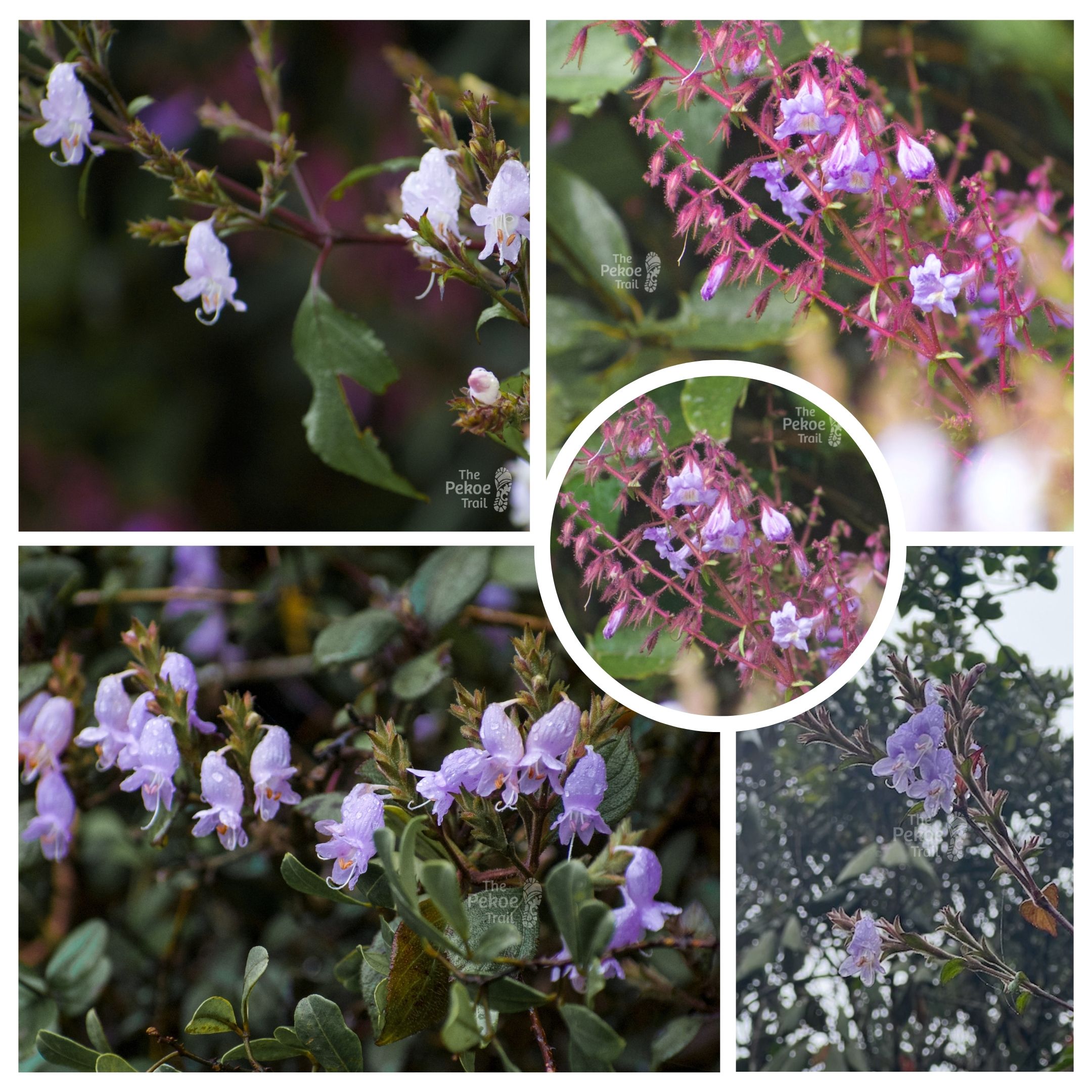
A bit of history
The first recorded mass bloom at what is now Horton Plains National Park was in 1881, noted by Thomas Farr, who built the old Farr Bungalow there. He observed blooms again in 1893 and 1905 and suggested the 12-year rhythm. Today, Horton Plains is a Protected Area (PA) specifically a National Park managed by the Department of Wildlife Conservation (DWC), ensuring the protection of these critical ecosystems, habitats and affiliated biodiversity.
Why it matters
The Nelu bloom is more than a photo opportunity. When the plants die, they leave space for new species to grow, adding diversity to the forests and grasslands. Their roots support rare parasitic plants like Christisonia. Their seeds feed birds, insects and small mammals. Additionally for the inhabitants of the Central Highlands, Nelu has long been a symbol of renewal and prosperity.
Where to See It on The Pekoe Trail
Since our first Nelu post on Instagram a couple of weeks ago, it has been trending across social media. With so many visitors heading into the Central Highlands, this is a good time to remind everyone that the florescence event needs to be witnessed responsibly.
On the Pekoe Trail you can currently see the Nelu bloom in these sections:
| Stage | Location | What You’ll See |
| Stage 10 | Dayagama to Horton Plains | Thick clusters in grasslands and forest periphery |
| Stage 11 | Horton Plains to Udaweriya | Abundant flowers along ridges and in shrublands |
| Stage 12 (partial) | Udaweriya to Haputale | Scattered patches on rocky outcrops and misty lookouts |
Photography tip: Go early morning or late afternoon when the soft light makes the colours even more vivid.
How to Enjoy It Responsibly
With all the excitement online, here is how we can make sure this rare natural event remains for generations to come:
- Stay on the demarcated trail and avoid stepping on young plants
- Do not pick or break flowers: they bloom only once in twelve years
- Use natural light for photos and avoid flash or anything that disturbs the flora
- Respect Protected Area (PA) Rules: no loud music, no littering, no feeding wildlife, and no drones without permission
- Littering or illegal waste disposal is also a punishable offense under the Central Province Waste Management Authority Statute (No. 04 of 2017)
- Follow all National Park Regulations as well as The Pekoe Trail Terms & Conditions
- Remember to purchase your Horton Plains National Park Entrance Permit and get your The Pekoe Trail Stage Pass before your hike
Legal Note: Protection of Nelu Plants
Nelu plants are protected by Sri Lankan law under two key legislation: The Fauna and Flora Protection Ordinance (No. 2 of 1937) and the Forest Conservation Ordinance (No. 16 of 1907). They also fall under the National Environmental Act (No. 47 of 1980).
What this means in practice is simple: attempting to remove, transport, uproot, damage, or destroy Nelu plants is against the law. Offenders can face heavy fines and even prison sentences.
Be Part of the Story
Very few natural events in the world come with such a long wait. If you are hiking the Pekoe Trail this season, the Nelu Bloom is not just something to look at. It is a moment in living history.
Share your photos with #MyPekoeTrail and tag @thepekoetrailofficial so we can follow this rare bloom across the mountains together.
Photos captured at Horton Plains, Pekoe Trail Stage 11 in Aug 2025, by Pramudith Thenabadu, All Rights Reserved.

